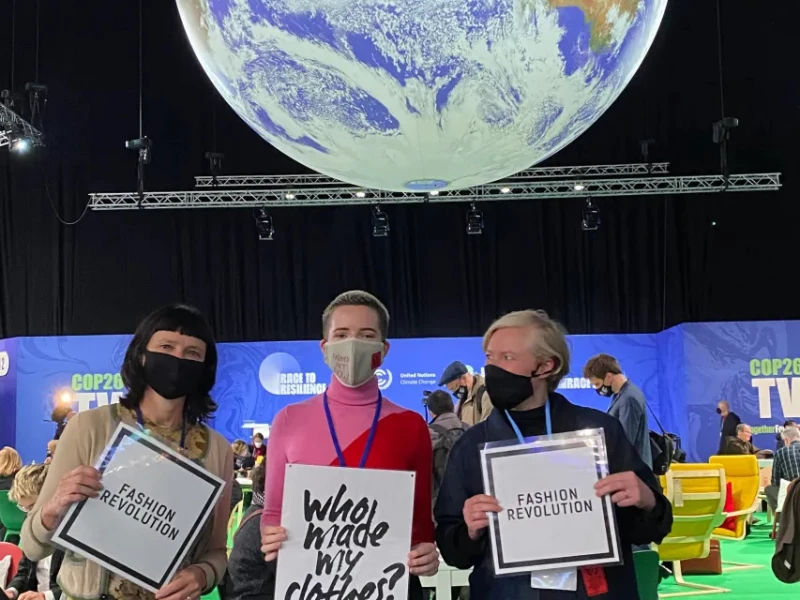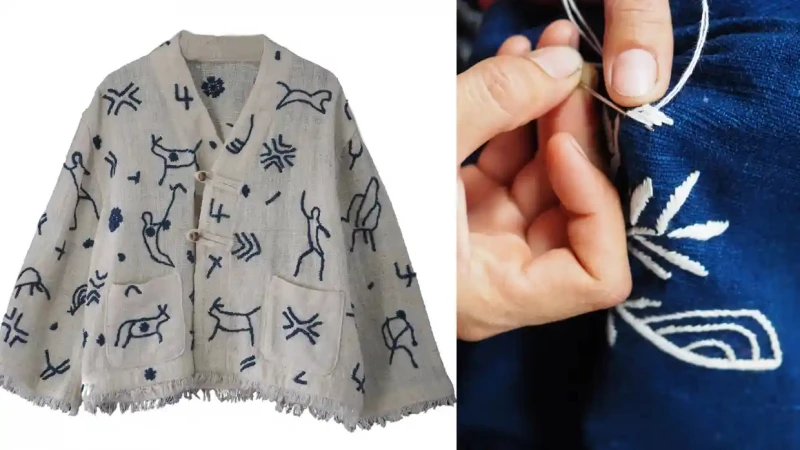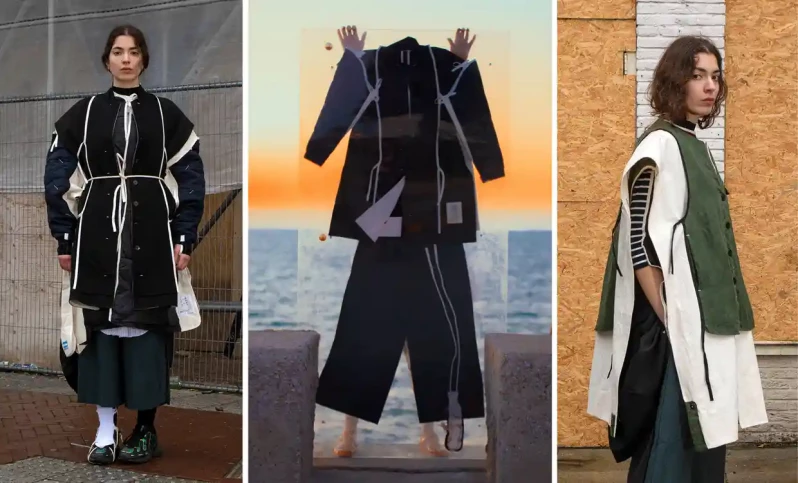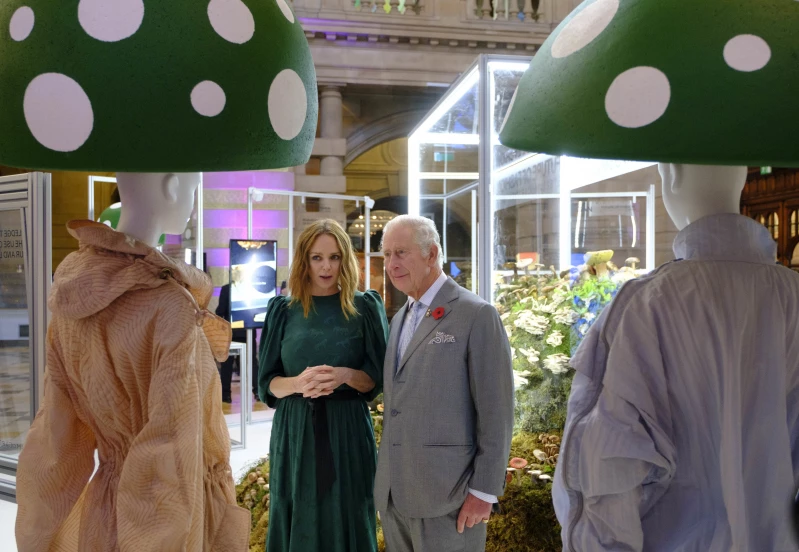
What The Fashion Industry Should Take Away from COP26
COP26: A yearly opportunity for global leaders to encourage each and every one of us to become more respectful and mindful towards nature. As Kim Hellström, H&M’s Strategy Lead On Climate, says,
“COP26 is a platform that can show what is possible if we bring innovators, suppliers, customers and other partners on board to find innovative solutions.”
But what, actually, can the fashion industry do about the commitments our world leaders have pledged at the 26th UN Climate Change Conference of the Parties in Glasgow? What practical action can you as a business owner take to hold these politicians accountable for their words, and what guidance do you need to hold yourself responsible for your own decision-making in the face of these promises?
In this article we take a look at some key components of the final COP26 agreement, and the role the fashion industry must play in mitigating climate change.
Climate crisis
The climate crisis is one of the biggest problems globally. Cities are growing fast and cause an estimated 75% of carbon emissions making urban action critical to halting global heating. Societies and governments take this emergency seriously and have pledged to prioritise climate change.
Collaboration
Collaboration and solidarity is the main solution that will help us shift towards the right direction. Specialists from all around the world come together at this annual conference to engage and act, before it is too late. The main aim of the conference is to reach net zero - a state in which the greenhouse gases going into the atmosphere are balanced by removal out of the atmosphere - by 2050. The world is becoming more transparent, greener and more sustainable, and important initiatives will help us secure global net zero, for instance, by encouraging investments in renewables, shifting to electrical vehicles and curtailing deforestation.
A push for greater transparency has developed innovations including lean manufacturing, the formation of trade unions to support citizen power, and regenerative fashion practices that look to counteract the harm that, for example, dyes and materials have caused to soils and rivers.

Supply Chains
During the conference, fashion experts advocated for policies that will change the future of fashion and our world, for instance, with the crucial topic of supply chains. Countries are set to implement the policies that will meet mutually-agreed targets and subsequently reduce their supply chain emissions, amongst other positive outcomes.
Fashion Revolution, the non-profit global movement, ask us to focus on Policy, Industry and Culture. We must hold brands accountable through legislation, for example with due diligence on supply chains and sustainable materials. They urge policymakers to include the fashion industry in their climate policies, and for brands to increase transparency so that we are collectively able to track and reduce impact.
The environmental non-profit Textile Exchange were also at the conference with a direct plea to world leaders urging governments to incentivise the use of sustainable materials in trade law. Their request stated that,
“cost is one of the key barriers faced by companies looking to shift their supply chains towards environmentally-preferred materials”.
Green shipping corridors
An important ambition announced during the conference was the aim to develop green shipping corridors. These zero-emission shipping routes between two ports involve deploying zero-emission vessels and alternative fuel charging infrastructure. Considering the dramatic role the fashion industry - a key component of our global economy - has played in the creation of the problems of carbon emissions, resource use, material waste, destruction of livelihoods and habitats to name just a few, our world leaders are now responsible for implementing the commitments they have pledged.
Final pledges of the conference
Fashion has a chance to be seen as a leader and use its influence for the good of the planet. At the end of the conference, world leaders had made a series of climate pledges aiming to increase ambitions that will see a role for the fashion industry in tackling climate change:
- Collective action on halving the greenhouse gas emission by 2030, with a goal to achieve net-zero emissions no later than 2050
- Renewed commitments form a decarbonisation plan to limit the global temperature rise to 1.5 degrees Celsius above pre-industrial levels
- Resourcefulness in waste elimination
- Increase responsibility by businesses towards their global supply chains
- Support skills development in education to encourage children to learn the necessary skills to make, repair and reuse their clothes
- Use 100% of electricity from renewable sources by 2030, using environmentally-friendly raw materials and the phasing out coal
- Green shipping corridors; zero-emission vehicles become the new normal and are accessible, affordable and sustainable in all regions
Key fashion initiatives at COP26
Fashion Open Studio x British Council
Nine participating designers from across the world were selected to open up their studios virtually to showcase their creative responses to fashion’s environmental impact and the themes of Adaptation and Resilience and Nature, forming part of the British Council’s The Climate Connection global programme.
All of the showcased designers are delicious, but we picked out a few:
Bora Studio
Their main focus is to use the common household jute sack to encourage a revitalisation of craft and engagement. They have recently worked with women to harness the invasive water hyacinth as a material to weave with - a product that can then become fertiliser for the soil it lands on.
Bhukram
Thai brand Bhukram tell stories about the Phu Phan community’s way of life and its natural environment through artistic embroidery on clothing. They use a participatory community process with a diversity of artisans to create super beautiful and unique pieces.

Garcia Bello
This Argentinian focusses on zero waste patterns that can adapt with the wearer, and materials from reclaimed sources. The whole brand revolves around education of making so that others can follow on with their own upcycling.

Stella McCartney
Exhibiting at the conference, Stella had a self-named showcase, "Future Of Fashion: An Innovation Conversation", that featured garments and products including, Bolt Threads’ Mylo mycelium “unleather”. Also featured was the world’s first vegan soccer cleats, created by Stella McCartney in partnership with French soccer player Paul Pogba and Adidas. Some regenerative organic cotton fabric from Söktaş, and Evrnu NuCycl- and Econyl-regenerated nylon sourced from post-consumer waste and ocean plastics.

Learning more
Follow on with Lessons from our guest experts to understand how you can implement responsible practices within your business in line with the pledges above.
Utilising zero emission urban logistics [Sam Keam, Zedify]
Holistic circular design for sustainable cities and communities [Charlie Palmer, Incremental Urbanism]
Reducing your fashion production energy footprint [Stephanie Steele, The Sustainable Fashion Collective]
Developing circularity in urban environments [Lamia Sbiti, ReLondon]
The environmental and economic impacts of recycling textiles [Cyndi Rhoades, Worn Again Technologies]
Fashion's sustainability agenda: where to start [Vogue Business]
Join The Sustainable Fashion Collective®
Join The Sustainable Fashion Collective® for access to 54 Masterclasses, each with around 10 Lessons in each to help you get to grips with a topic. Featuring Masterclasses focussed on business, textiles and wider issues, there is something no matter what your product category, or where you are in your entrepreneurial journey.
Cancel anytime subscription model. Join here, and then upgrade.
Try us for £63 for 4 months access (that's just £15.75 per month!) >> upgrade now
